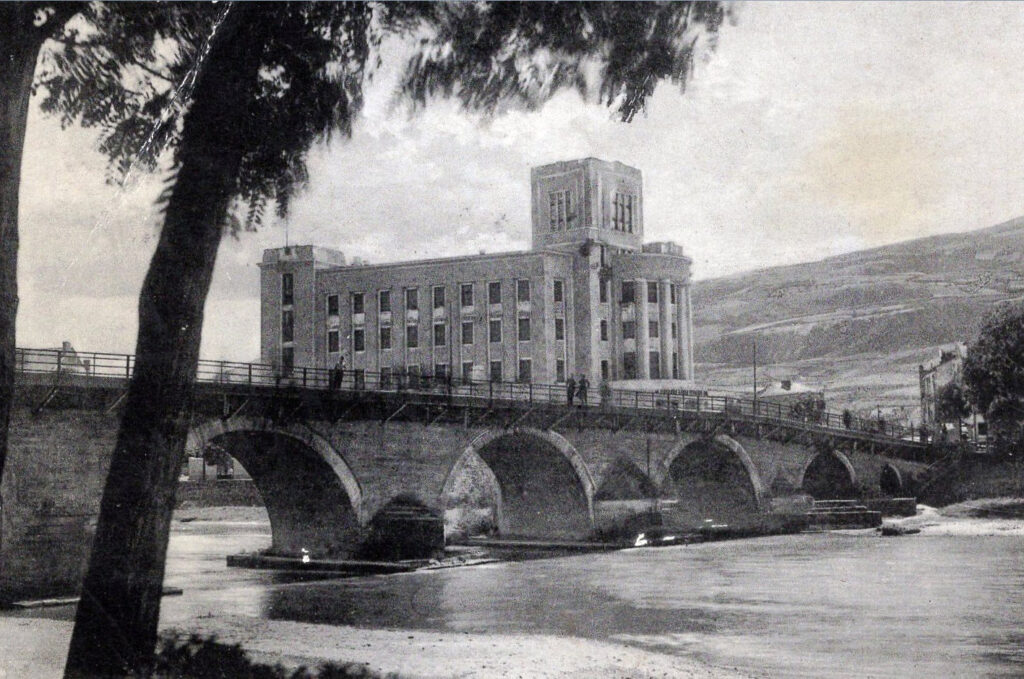
National Bank Skopje in the 1930s (destroyed in 1963)
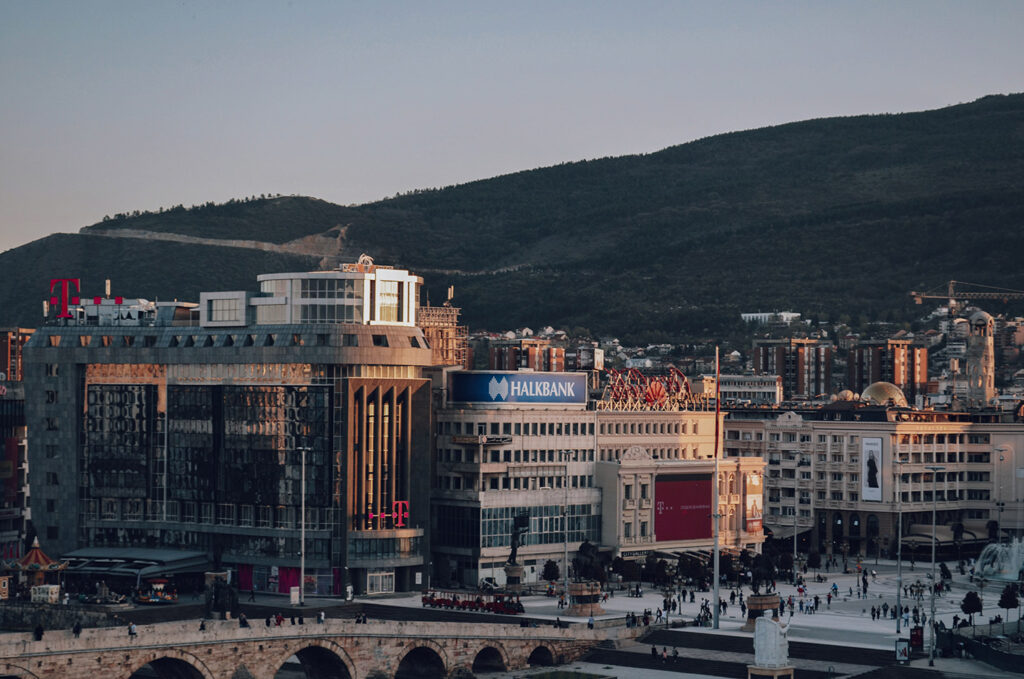
Skopje City Square today – Photo by Aleksandar Kyng
One tactic with many variations is reconstruct. Reconstructing architectural memory is one of the few tactics that doesn’t have to do with deconstructing an old memory, nor with constructing a brand new one. This is a method of reviving a previously deleted old memory that is connected to real past events. It is a method which seeks for memories that antedated the part of history one wishes to ignore and forget. Reanimating these memories would draw attention to chosen past times and would redirect people’s focus in favor of the main strategic goal of manipulating the perception of history.
This is a tactic that uses nostalgia as a tool for influencing citizens’ feelings and opinions. When hinting that times used to be better, rebuilding heritage or just physical objects from those days, would straighten the longing for them and would take the attention away from memories of the times that followed.
I found this tactic to be the ‘blurriest’ of all, as the method seems to slightly alter in every individual case. More aspects of it remain unclear to me as I couldn’t make strong conclusions analyzing the three following examples.
The reconstructed version of the National Bank only resembles the original. It contains different program, it is much bigger in scale, different in style and is only aiming for a memory connection to the old building through the composition of its façade.
The Old Theater is a more accurate copy of the old one, style and silhouette-wise, but it is mirrored and also emphasized in its scale.
The Old City Hall (Old Army Hall) is the most accurate copy of all, again speaking style and silhouette-wise, with just small alterations, but it is also emphasized in scale. So which is the method? Accuracy or only resemblance?
The huge time gap between destruction and resurrection shows that bigger part of the city’s population today doesn’t actually have personal memories from the time when the original buildings were standing. Some do remember bits and pieces, more do not. Same goes for the creators of the reconstructed buildings. Sure there are pictures of them, we know how they looked like, but we don’t actually know what memories they carried. So, in some sense it is like the blind leading the blind.
Isn’t it strange that we are longing for an unfamiliar past time?
Who decided that the way forward is looking backwards? Why aren’t we living in our own time?
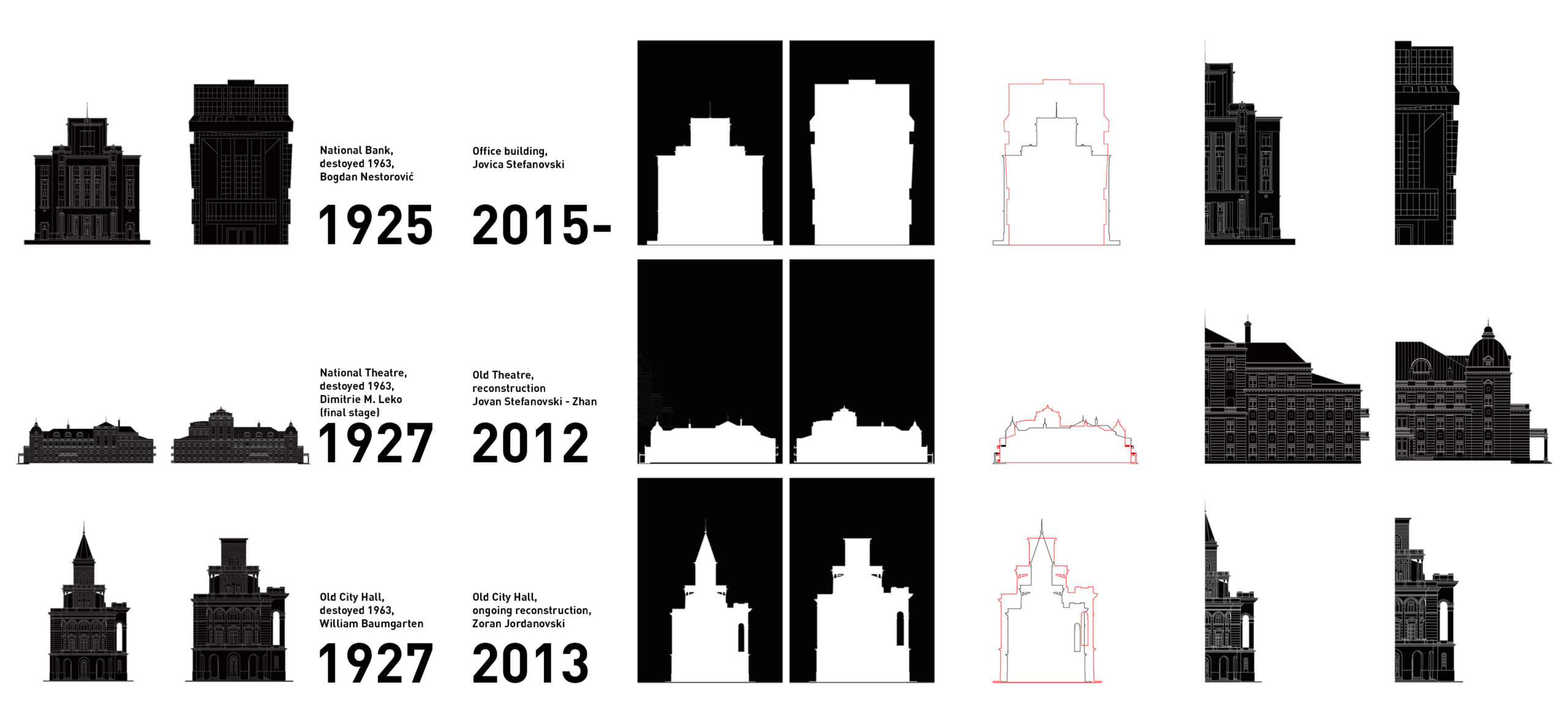
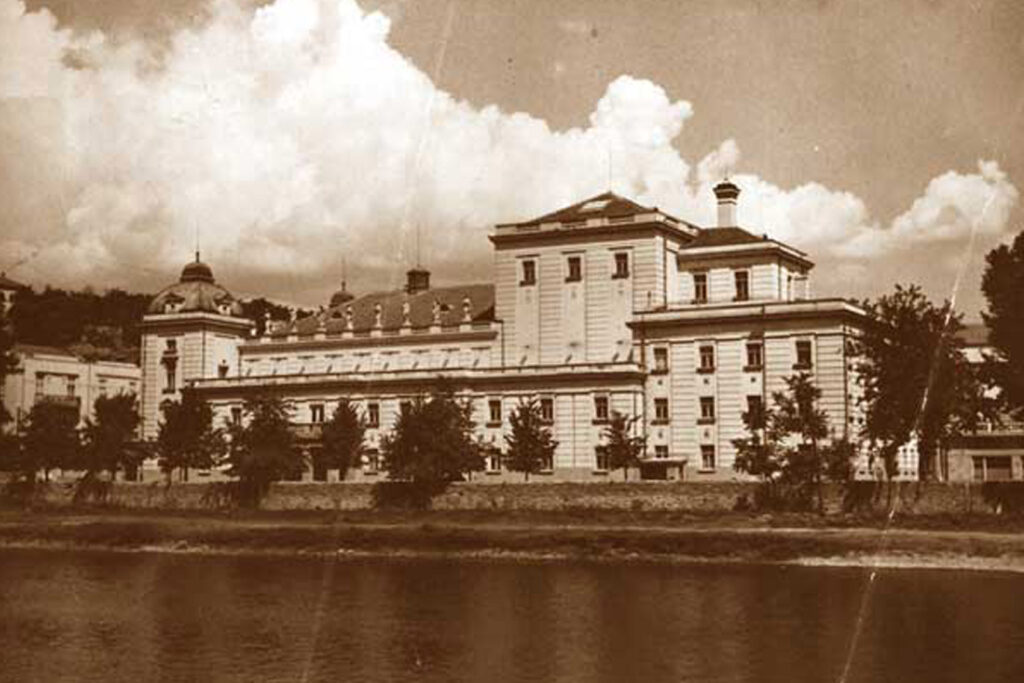
Macedonian National Theatre in the 1930s (destroyed in 1963)
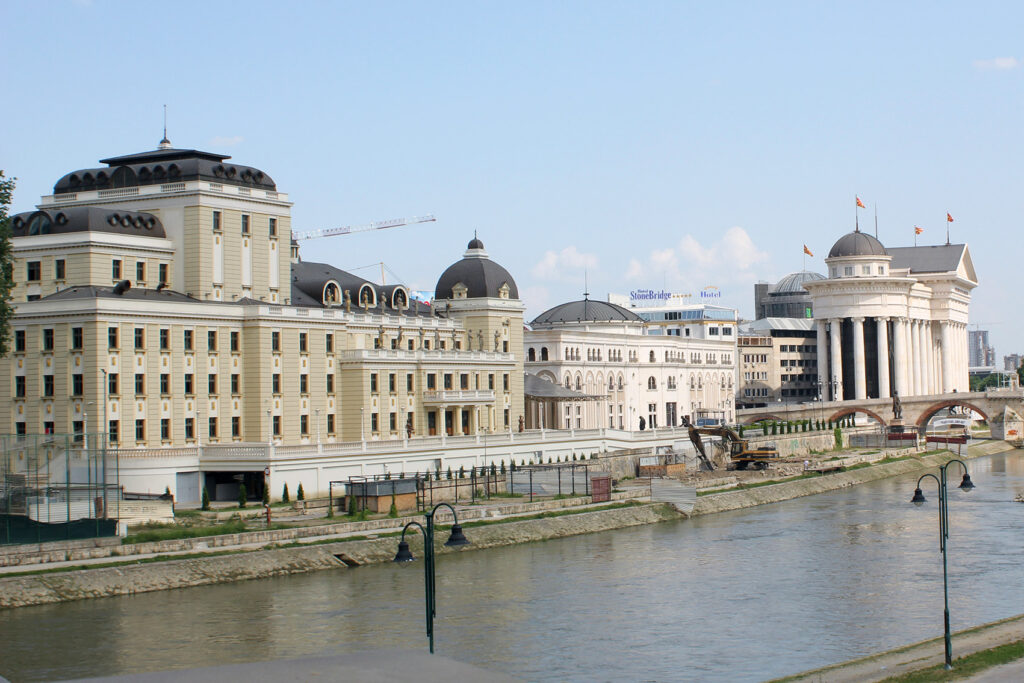
Old Theatre, MNT, 2014
